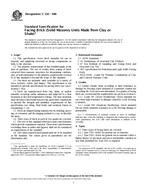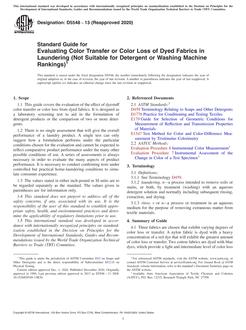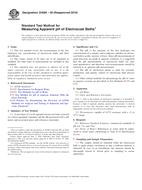1.1 This test method assesses the corrosion susceptibility of small, metallic, implant medical devices, or components thereof, using cyclic (forward and reverse) potentiodynamic polarization. Examples of device types that may be evaluated by this test method include, but are not limited to, vascular stents, ureteral stents (Specification F 1828), filters, support segments of endovascular grafts, cardiac occluders, aneurysm or ligation clips, staples, and so forth.
1.2 This test method is used to assess a device in its final form and finish, as it would be implanted. These small devices should be tested in their entirety. The upper limit on device size is dictated by the electrical current delivery capability of the test apparatus (see Section 6). It is assumed that test methods, such as Reference Test Method G 5 and Test Method G 61 have been used for material screening.
1.3 Because of the variety of configurations and sizes of implants, this test method provides a variety of specimen holder configurations.
1.4 This test method is intended for use on implantable devices made from metals with a relatively high resistance to corrosion.
1.5 The values stated in SI units are to be regarded as standard. No other units of measurement are included in this standard.
1.6 This standard does not purport to address all of the safety concerns, if any, associated with its use. It is the responsibility of the user of this standard to establish appropriate safety and health practices and determine the applicability of regulatory limitations prior to use.REFERENCE:
ASTM Standards:
D1193 Specification for Reagent Water
E177 Practice for Use of the Terms Precision and Bias in ASTM Test Methods
E691 Practice for Conducting an Interlaboratory Study to Determine the Precision of a Test Method
F1828 Specification for Ureteral Stents
G3 Practice for Conventions Applicable to Electrochemical Measurements in Corrosion Testing
G5 Reference Test Method for Making Potentiostatic and Potentiodynamic Anodic Polarization Measurements
G15 Terminology Relating to Corrosion and Corrosion Testing
G61 Test Method for Conducting Cyclic Potentiodynamic Polarization Measurements for Localized Corrosion Susceptibility of Iron-, Nickel-, or Cobalt-Based Alloys
Product Details
- Published:
- 10/01/2008
- Number of Pages:
- 9
- File Size:
- 1 file , 140 KB
- Redline File Size:
- 2 files , 250 KB


